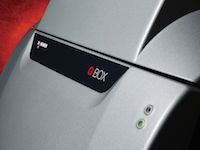Members Login

Channels
Special Offers & Promotions
Respected Synthetic Biology Group Chooses G:BOX Chemi XT4 to Speed up Analysis of DNA and Proteins from Bacteria Engineered to Process Heavy Metals Accumulated in Plants Grown on Contaminated Soil
Syngene, a world-leading manufacturer of image analysis solutions, today announced its G:BOX Chemi XT4 is being used by scientists at the University of Edinburgh to accurately quantify DNA and proteins from bacteria engineered to produce metal nanoparticles.
 This work is contributing to speeding up throughput of research on novel methods of processing toxic metals from contaminated soil.
This work is contributing to speeding up throughput of research on novel methods of processing toxic metals from contaminated soil.
Researchers in the Horsfall Laboratory at the University of Edinburgh in Scotland are using a G:BOX Chemi XT4 multi-application imager to analyse agarose gels of bacterial DNA stained with the green fluorescent dye SafeView™. They are also utilising the G:BOX Chemi XT4 to image SDS-PAGE gels and chemiluminescent Western blots of bacterial proteins used to make nanoparticles of heavy metals such as arsenic and platinum. This is allowing scientists there to accurately quantify DNA to genetically engineer bacteria that are able to produce metal nanoparticles from material extracted from plants grown on land contaminated with toxic metals. These nanoparticles of platinum and arsenic, for example, are valuable, and using bacteria to further process the plant material adds value to the decontamination process.
Michael Capeness, Research Technician in the Horsfall Laboratory, stated: “We’re engineering bacteria that are capable of reducing accumulated toxic metals from plant extracts grown on contaminated soil into solid metal nanoparticles. To do this we utilise a number of different molecular biology techniques and image a range of gel and blot types.”
Capeness continued: “There are nine researchers using this imager in our lab and this means we need a flexible system which is quick and simple to set up each time. We assessed two analysers and chose the G:BOX Chemi XT4 as it met all our requirements.”
Laura Sullivan, Syngene’s Divisional Manager, commented: “We are delighted that our imaging equipment is helping researchers at the University of Edinburgh to speed up the throughput of their research. For scientists in core facilities wanting a flexible, easy to use imager which can accurately analyse both fluorescently labelled DNA, as well as chemiluminescent proteins the G:BOX Chemi XT4 imaging system is the perfect, cost-efficient solution.”
Media Partners


